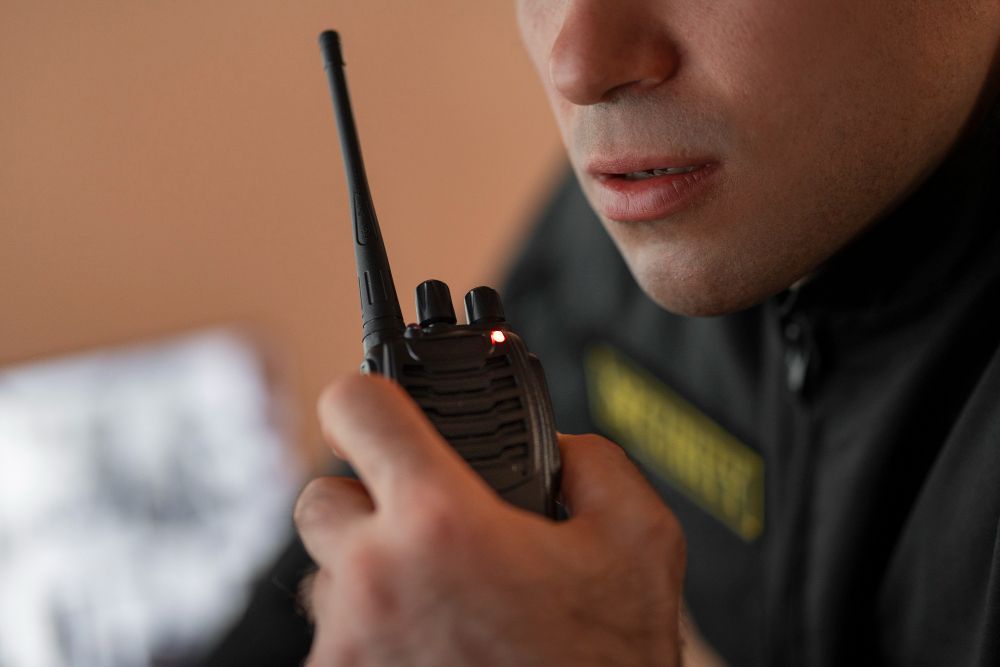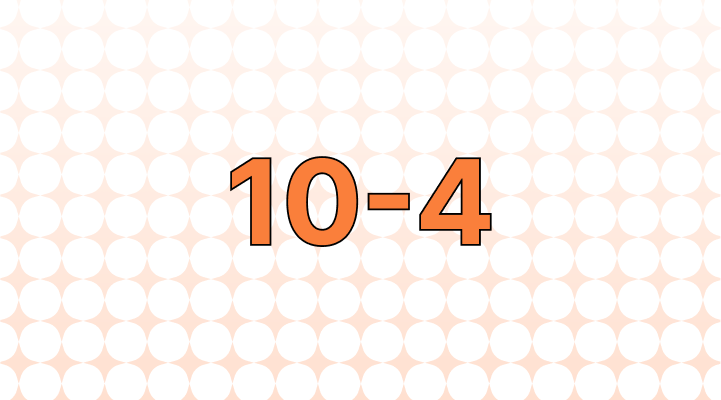"10-4" means OK, showing acknowledgment that the message was received. It is used among the police and military as a response that the message is understood.

Origin of "10-4"
Pronounced "ten four" (not "ten dash four" or "ten minus four"), "10-4" is part of the ten codes used in law enforcement, which are short abbreviations for walkie-talkie or radio communication. The codes were made short and convenient because police could not stay on the line for long. There are about 210 ten codes and some may vary per country; for example, some ten codes in the US might not be identical to those used in Canada.

In the ten-code system, each code consists of two numbers, with the first digit denoting the category and the second indicating the specific code within that category. "10-4" falls under the category pertaining to procedures and officer details and signifies affirmative or acknowledgment.
"10-4 copy" is another variation with "copy" also originating from when people used to talk on walkie-talkies. "Copy" in the context of "10-4 copy" also means OK, a response communicating that the receiver heard and understood the message.
Commonly used ten codes
- 10-1: Unable to copy (message poorly received)
- 10-2: Signal good
- 10-7: Out of service
- 10-8: In service
- 10-9: Repeat last transmission
- 10-10: Standing by or off duty
- 10-20: Location (followed by the name of a place)
- 10-23: Standby
- 10-33: Emergency
- 10-42: Off-duty
Remember some codes may vary per country or area, so if you are part of law enforcement, be sure to check with your supervisor to learn the exact meanings of the ten codes used in your department.
Other codes
- Code 0: Officer in need of immediate assistance.
- Code 1: Routine response with no lights or sirens.
- Code 2: Urgent response, but no lights or sirens.
- Code 3: Emergency response with lights and sirens.
- Code 4: Situation under control; no further assistance needed.
- Code 5: Stakeout, surveillance, or observation.
- Code 6: Change radio frequency or responding from a long distance.
- Code 7: Meal break.
- Code 8: Restroom break or request backup/cover.
- Code 9: Traffic stop or set up a roadblock.
- Code 10: Bomb threat/suspicious package.
These codes are used to convey information quickly and efficiently over radio transmissions, particularly in situations where brevity is essential.
10-4 in media and everyday use
Use of the term 10-4 is easily seen in crime movies and TV shows and is occasionally used in everyday language by fans of such shows in informal contexts. Its appearance in popular culture has made it more widespread, and the code can be used in various situations to indicate understanding, agreement, or compliance.
In addition to its usage in law enforcement and military contexts, "10-4" is commonly heard in radio communications among truckers, pilots, and emergency responders.
Example sentences
Here are ten example sentences or conversations demonstrating the use of "10-4":
Officer 1: "Dispatch, we're en route to the location."
Dispatch: "10-4, proceed with caution."
In the example above, the dispatch is stating that he, she, or they understood the message that Officer 1 is heading to the location.
Ulysses: "I'll meet you at the restaurant at 7."
Kelly: "10-4, see you there."
In this casual conversation above, Kelly is communicating that she acknowledges her meeting time and location with Ulysses with the simple "10-4."
Wife: "Could you pick up some milk on your way home?"
Husband: "10-4, adding it to the list."
In the dialogue above, the wife asks a favor of the husband to which he responds "10-4," which means "OK." In everyday situations, "10-4" is a fun way to convey "OK" or "all right," making you feel like you are in a crime drama.
Tom: "I'm going to finish this task first."
Randy: "10-4, take your time."
In this sample conversation, Randy acknowledges Tom is going to finish the task first by curtly saying the concise "10-4," meaning "OK."

Want to sound like a native speaker?
Engram’s AI-powered grammar checker makes your English sound like a native speaker’s, suggesting natural English expressions on top of fixing grammar, spelling, punctuation, word order, and vocabulary.














